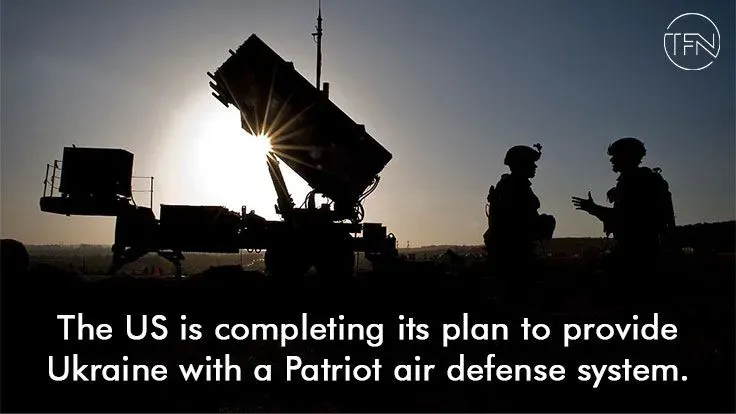Following an urgent request from Kyiv for stronger weapons to shoot down Russian missiles and drones that have severely damaged the country's energy infrastructure and left millions of people without heat during the bitterly cold winter, the US is finalizing plans to send Ukraine its sophisticated Patriot air defense system.
According to US government sources quoted by the news agencies Reuters and Associated Press, Washington might decide on the Patriot as soon as Thursday.
Ukraine's air defense systems were tested again on Wednesday morning, and the city's mayor, Vitali Klitschko, said that the Shevchenkivskyi neighborhood had called for help after hearing explosions.
He added on his Telegram channel, "Details later."
Even as late as Monday, Ukrainian President Volodymyr Zelenskyy asked Western officials to provide his nation with additional cutting-edge weaponry. The Patriot would be the most sophisticated surface-to-air missile system the West has ever given Ukraine.
Alexander Vindman, a former Army lieutenant colonel who was in charge of Ukraine policy at the White House for a while, says that it would be "very, very important" for Kyiv to get Patriot air defenses.
If the Russians deploy short-range ballistic missiles, "they are going to be pretty capable of dealing with several various issues the Ukrainians face."
The Pentagon refused to comment, and Ukrainian authorities did not respond right away.
Former Russian President Dmitry Medvedev warned NATO not to give Patriot missile defenses to Kyiv, and it seems likely that the Kremlin would see this as a step up in tensions.
Russia invaded Ukraine on February 24 and is already in a hard-fought war in the Donbas region of eastern Ukraine.
Since the invasion, which is the continent's worst battle since World War Two, the US has provided Ukraine with $19.3 billion in military aid.
Due to Russia's constant bombardment, the US and its allies have been sending Kyiv additional air defenses, ranging from older Soviet-era systems to more contemporary Western ones.
As temperatures drop, millions of residents must make do without heat, power, and water.
According to French Foreign Minister Catherine Colonna, over 70 nations and organizations offered just over 1 billion euros ($1.06 billion) in Paris to support Ukraine's water, food, energy, health, and transportation systems in the face of Russian aggression.
Zelenskyy celebrated the commitments in his nightly video message as excellent news.
He said, "Every day, we are gathering more power for Ukraine to bring us through this winter."
He also appealed for extra aid to deal with the mines and explosive ordnance left behind by the war in a speech to New Zealand's parliament on Wednesday.
As of right now, mines and unexploded ordnance are present across 174,000 square kilometers (67,000 square miles) of Ukrainian land, Zelenskyy told lawmakers.
It is around the size of Uruguay, Syria, or Cambodia.
Zelenskyy asked New Zealand, whose military has a lot of mine-clearing expertise, to take the lead in the cleanup operation.
For any youngster who may be killed by a covert Russian antipersonnel mine, he warned, "There is no genuine peace."
Patriot missiles have been taken into consideration for some time, according to White House and Pentagon officials, who have continuously stated that giving Ukraine more air defenses is a top priority. Officials say that this part became more important as winter got closer and the number of times Russian shells hit places where civilians lived.
Before the Patriot weaponry is deployed, Ukrainian soldiers would likely get training in Germany, according to a US official who spoke to the Reuters news agency. The training can take many months, according to Vindman.
CNN was the first to report on the administration's likely approval of a Patriot battery.
Officials said that the US was going to deploy one Patriot battery. A Patriot battery placed on a truck may have up to eight launchers, each of which can accommodate four missiles.
To run and maintain the complete system, which consists of a phased array radar, a control station, computers, and generators, roughly 90 troops are normally needed. The US Army claims that just three troops are required to launch it.

